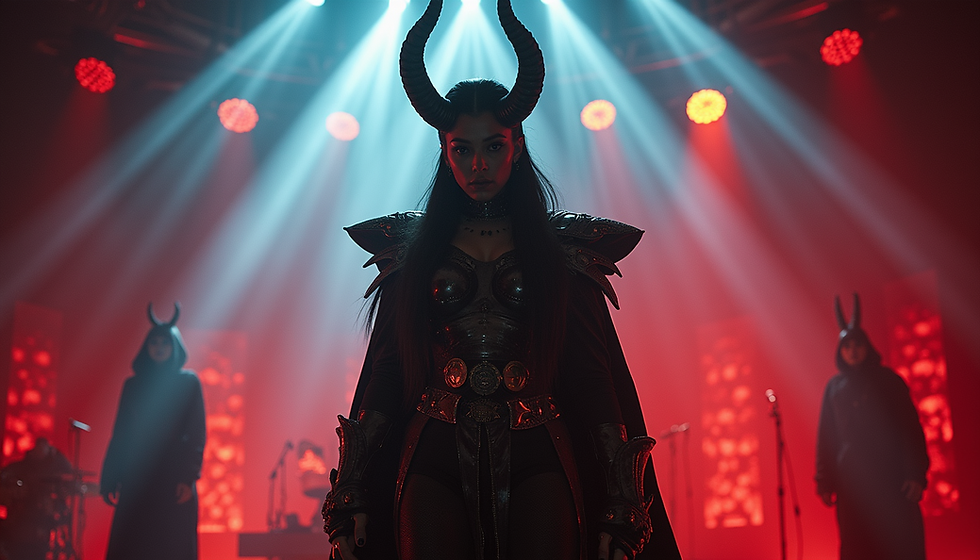Exploring the Evolution of Marvel Comics Through the Decades
- Joseph Fanning
- Oct 5
- 4 min read
Marvel Comics has been a pivotal force in the comic book industry since its beginnings in the 1930s. Over the span of more than eight decades, Marvel has drastically shaped the comic landscape and influenced popular culture around the globe. This blog post will embark on a fascinating journey through the evolution of Marvel Comics, shining a light on key milestones and iconic characters that emerged throughout the decades.
The Golden Age (1930s-1940s) | Marvel
The Golden Age of comics kicked off in the late 1930s, featuring the introduction of characters that soon became iconic. In 1939, Timely Publications—that would later become Marvel—introduced the world to the Human Torch and Namor the Sub-Mariner.
During this time, superheroes reflected society's need for hope, particularly during the Great Depression and World War II. For example, Captain America made his debut in 1941, quickly embodying patriotism and resilience as he fought against Nazi threats. The character resonated so widely that his first issue sold over 1.5 million copies.
This era established the foundation for the superhero genre, creating archetypes that continue to influence stories today.

The Silver Age (1950s-1960s) | Marvel
The Silver Age emerged in the late 1950s, marking a resurgence of superhero narratives. This period introduced an array of iconic characters such as Spider-Man, the X-Men, and the Fantastic Four, brought to life by the creative legends Stan Lee and Jack Kirby.
Marvel's approach was groundbreaking. They crafted flawed characters dealing with real-life struggles, making them more relatable. For example, Spider-Man faced typical teenage issues like fitting in and balancing responsibilities, successfully connecting with young readers at the time. Studies show that by the end of the 1960s, Spider-Man was one of the top-selling comic book characters, with sales exceeding 1 million copies per month.
Moreover, the interconnected universe created during the Silver Age allowed characters to interact across storylines, weaving a complex web that captivated and engaged fans.
The Bronze Age (1970s-1980s) | Marvel
The Bronze Age brought a shift towards mature themes and social issues within comics. Marvel tackled significant topics such as drug addiction, racism, and environmental concerns. A notable example is the "Green Goblin" storyline in The Amazing Spider-Man, which directly addressed drug use.
This era introduced diverse characters like Luke Cage and Black Panther, who helped to enhance representation in comic book storytelling, reflecting societal changes. The theme of diversity was essential; in 1966, just 10% of comic book characters were non-white, but by the 1980s, this number had risen significantly.
Marvel's willingness to confront difficult subjects established its reputation as a publisher committed to pushing boundaries and engaging thoughtfully with contemporary issues.
The Modern Age (1990s-Present)
The 1990s ushered in the Modern Age of comics, characterized by both a boom in the industry and a series of challenges. Marvel expanded its universe, presenting new characters and storylines designed to attract a broader audience.
However, the market crash in the early 1990s led to the closure of numerous comic book stores and a decline in sales. Marvel adapted by diversifying its portfolio, launching titles like The Ultimates and Ultimate Spider-Man, which reimagined popular characters for a new generation. These titles gained traction, with Ultimate Spider-Man selling over 600,000 copies in its first issue, showcasing the potential for revitalization within the comic landscape.
As we moved into the 2000s, Marvel made a significant shift to multimedia, expanding into film and TV. The Marvel Cinematic Universe (MCU) emerged as a cultural phenomenon, grossing over $23 billion at the box office by 2021. Characters like Iron Man, Thor, and the Avengers have drawn in audiences far beyond comic book fans, further cementing Marvel's place in global pop culture.
The Impact of Digital Media | Marvel
With advancements in technology, the way fans experience comics has transformed. The emergence of digital media has revolutionized the comic book industry, allowing readers to access stories online. Marvel embraced this shift by launching platforms like Marvel Unlimited, which provides a library of over 29,000 comics to subscribers.
Digital comics have not only made material more accessible but have also allowed new creators to express their voices. This evolution ensures diverse narratives continue to emerge, keeping Marvel Comics relevant and relatable in an ever-changing world.
A Lasting Influence
The journey of Marvel Comics through the decades highlights its remarkable ability to adapt and resonate with audiences. From the heroic tales of the Golden Age to the Multimedia expansions of the Modern Age, Marvel continues to redefine what it means to be a comic book publisher.
Looking forward, it is evident that Marvel Comics will keep evolving, reflecting society's shifts and the expectations of its audience. Whether through traditional print or innovative digital platforms, the vibrant stories of Marvel's iconic characters will surely continue to inspire and entertain for generations to come. Marvel Comics has not only shaped the comic book industry but also left a significant mark on popular culture, making it a cherished institution for fans worldwide.
Joe watches Marvel shows, movies, and reads Marvel Comics.










Comments